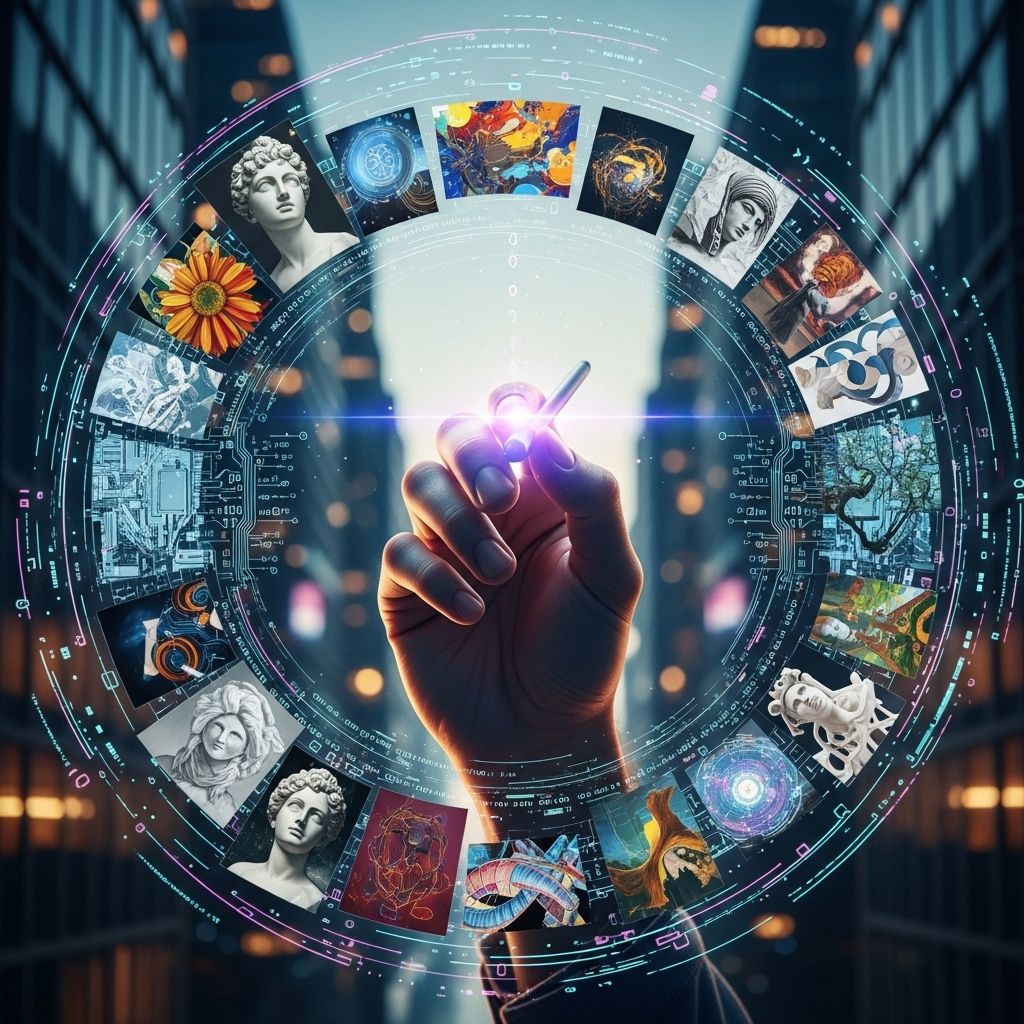Artificial Intelligence (AI) is revolutionizing the creative landscape, offering artists and creators a plethora of unique composition ideas that merge technology with human ingenuity. As we delve into this exciting intersection of art and tech, we will explore various ways AI can enhance artistic composition across different mediums. From visual arts to music and literature, the unique capabilities of AI can inspire new forms of expression and creativity.
Understanding AI’s Role in Creative Composition
AI is not just a tool; it is a collaborator that can assist artists in thinking outside the box. By analyzing vast amounts of data, AI can identify patterns, generate ideas, and even produce finished works based on the parameters set by the user. This collaborative process can lead to unexpected outcomes, pushing the boundaries of traditional composition.
The Basics of AI-Assisted Composition
To get started with AI in your creative process, it’s important to understand the fundamentals. Here are some key elements:
- Data Input: AI requires input data to generate content. This could be music samples, images, or text.
- Algorithms: Different algorithms are used for various creative tasks, such as neural networks for image generation or natural language processing for text generation.
- User Interaction: The user provides guidelines or constraints that shape the AI’s output, ensuring that the final composition aligns with their vision.
Application Areas for AI in Creative Composition
AI’s capabilities can be harnessed across various artistic domains. Below are some areas where AI can uniquely contribute to composition.
1. Visual Arts
AI can aid visual artists in generating unique artwork through various platforms. Here are a few methods:
- Generative Art: Tools like DeepArt and DALL-E use neural networks to create original images based on user-defined styles and themes.
- Style Transfer: AI can apply the artistic style of one image to another, creating hybrid artworks that combine elements from different sources.
- Collaborative Creation: Platforms like Artbreeder allow users to collaborate on images, leveraging AI to blend and alter designs.
2. Music Composition
In the realm of music, AI can both inspire and compose original pieces. Consider these approaches:
| AI Tool | Description |
|---|---|
| AIVA | Generates emotional soundtracks based on user inputs and styles. |
| Amper Music | Allows creators to compose music by selecting genre, mood, and instrumentation. |
| OpenAI’s MuseNet | Can generate complex musical compositions in a variety of styles. |
3. Creative Writing
AI’s impact on literature is profound, as it can assist writers in various ways:
- Idea Generation: Tools like Sudowrite help writers brainstorm plot ideas, character names, and dialogue snippets.
- Content Enhancement: AI proofreading tools can suggest improvements in grammar, style, and clarity.
- Collaborative Storytelling: Authors can co-create narratives with AI by providing prompts and allowing the AI to continue the story.
Benefits of Integrating AI into Composition
Integrating AI into your creative process offers numerous advantages:
- Enhanced Creativity: AI can push artists to explore new ideas they might not have considered.
- Increased Productivity: AI tools can streamline workflows, allowing artists to focus on refining their work rather than generating initial ideas.
- Personalization: Users can customize AI outputs to match their style and preferences, making it a tailored creative partner.
Challenges and Considerations
While AI presents exciting opportunities, it also poses challenges that creators must navigate:
1. Ethical Concerns
Questions arise regarding ownership and copyright when AI generates content. It’s essential to define authorship clearly in collaborative creations.
2. Quality Control
AI-generated content may vary in quality. Artists must be prepared to edit and refine outputs to meet their standards.
3. Over-reliance on Technology
There’s a risk that creators may lean too heavily on AI, potentially stifling their own creative processes. Balancing AI use with personal input is crucial.
Getting Started with AI in Your Creative Process
If you’re eager to explore AI-driven composition, consider the following steps:
- Identify Your Medium: Determine whether you’re interested in visual arts, music, writing, or another creative field.
- Choose the Right Tools: Research and select AI tools compatible with your chosen medium.
- Experiment: Don’t be afraid to experiment with different styles and inputs to see what resonates with you.
- Iterate: Use AI-generated outputs as a starting point and refine them based on your artistic vision.
Conclusion
AI is transforming the way artists and creators approach composition. By leveraging AI’s capabilities, artists can expand their creative horizons and explore new forms of expression. While there are challenges to consider, the benefits of integrating AI into the creative process are profound. As we continue to innovate and collaborate with technology, the future of composition looks brighter than ever.
FAQ
What are some unique composition ideas for using AI in art?
AI can be utilized to generate novel visual compositions by combining different styles, analyzing color palettes, and creating unexpected juxtapositions.
How can AI enhance my creative process in composition?
AI tools can assist in brainstorming ideas, generating variations of existing compositions, and suggesting improvements based on design principles.
Can I use AI to create music compositions?
Yes, AI can compose music by analyzing patterns in existing music and generating new melodies, harmonies, and rhythms.
What are the benefits of using AI for visual art composition?
Using AI in visual art can lead to faster experimentation, access to a wider array of styles, and the ability to explore concepts that might not be intuitive.
Are there any specific AI tools recommended for creating compositions?
Popular AI tools for composition include DeepArt, Runway ML, and AIVA, each offering unique features for visual and musical creation.
Is AI composition suitable for beginners or only advanced artists?
AI composition tools are designed for all skill levels, making them accessible to beginners while still offering advanced features for experienced artists.




